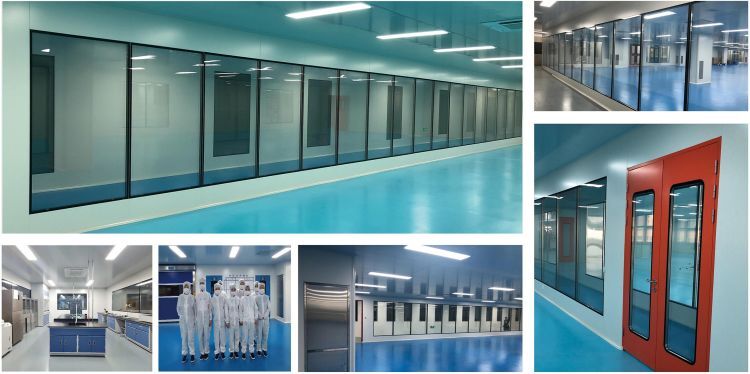What is a Dust-free Workshop?
- 2024-04-29
- View 22
A dust-free workshop refers to the removal of particulates, harmful air, bacteria and any other pollutant in the air within a set-out space. This also includes the indoor temperature, cleanliness, indoor pressure, air velocity & distribution, noise, vibration, lighting, and static electricity. These are all the factors that need to be monitored and controlled within a certain range of requirements in order to be classified as a dust-free workshop These workshops can also be referred to as clean workshops cleanrooms or dust-free rooms. The purification of a workshop can be divided into several categories based on the degree of purification and regional environment.

What are the grades of a dust-free workshop?
For many industries, it is a necessity to build dust-free workshops. However, every industry has different products that have varying requirements for purification levels of a dust-free workshop. Even within the same industry for varying production environments, different clean workshops have different production tasks. Therefore, the purification level needs to be set up according to the situation itself. For example, the cleanliness levels of the production room, packaging room, and laboratory are not the same. It is impossible for them to all be at 100 level, 10,000 level, or 100,000 level purification. We have to consider not only the purification level requirements but also the cost requirements.
Air cleanliness class: the classification standard is based on the maximum concentration of particles being greater than or equal to the particle size in the unit volume of air in a clean space. In China, dust-free workshops are tested and accepted according to the empty state, static state, and dynamic state condition, in compliance with “GB50073-2013 Clean Workshop Design Specification” and “GB50591-2010 Clean Room Construction and Acceptance Specification”.
The cleanliness and continuous stability of pollution control are the main standards for testing the quality of dust-free workshops. The standard is separated into several levels based on factors such as the regional environment and cleanliness. For this, the international standard and domestic regional industry standards can be used to measure it.
The expected standard of a 10K class dust-free workshop includes:
The maximum allowable number of dust particles (per cubic meter) is equal to or less than 2,500
The number of particles larger than or equal to 0.5 microns shall not exceed 350,000, and the number of particles larger or equal to 5 microns shall not exceed 2,000
The maximum number of microorganisms such as planktonic bacteria shall not exceed 100 per cubic meter; the number of bacteria shall not exceed 3 per petri dish.
Pressure difference: the pressure difference of clean rooms with the same cleanliness levels should be the same. The pressure difference between adjacent clean rooms of varied cleanliness should be equal to or more than 5Pa. The pressure between clean and non-clean rooms should be equal to or more than 10Pa.
When there are no special requirements for the temperature and humidity in the 10k class dust-free workshop, it is advisable to wear clean work clothes. The temperature is generally controlled at 20-22℃ in winter, rising to 26-26℃ in the summer with a fluctuation of ±2℃. The humidity of the cleanroom in winter is controlled at 30-50%, and in the summer months, it is controlled at 50-70%.
Power distribution: the general illuminance value of the main production room in the clean area should be more or equal to 300Lx. The illuminance value of the auxiliary studio, airlock rooms, corridors, personnel purification and material purification rooms should be 200-300Lx.
Noise control: during dynamic testing, the noise level in a 10K class cleanroom should not exceed 70 dBA. During static testing, the noise level of the 10K grade turbulent-flow clean room should not be greater than 60 dBA.
